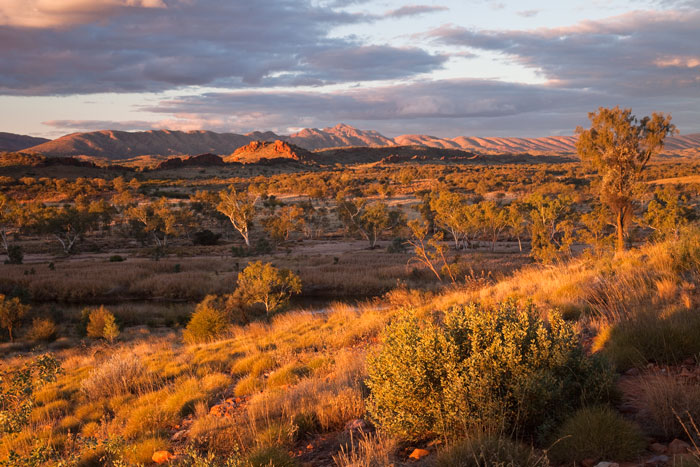
June 2012
West MacDonnell National Park, NT, Australia
Canon 5D MkII & EF 24-105mm f/4L IS USM, 1/15s f/11 ISO400 @55mm
The Finke River is born at the red center of Australia, where the MacDonnell Ranges capture what little moisture reaches them, and "flows" southeast to die on the Simpson Desert 400 miles away. Flows once in a while, that is, at least above ground, because most of the year it is just a group of shrinking water holes placed along its dry bed, a few permanent, most temporary. The story can change very quickly when the rains come, however, and only then does the Finke indeed flow like most rivers do. On rare occasions when the season has been particularly wet, the Finke may even have enough force to cross the Simpson and reach Lake Eyre, a few feet below sea level, where its waters spread and slowly evaporate.
The real Finke, however, lies underground, and flows continuously just a few feet below the dry and stony river bed. The water level is so close to the surface that a multitude of trees and shrubs easily absorb it through their roots, creating the savanna-like ecosystem shown in the above image, where the river, around a hundred feet wide at this point, is located in the deep shadows of the lower left of the photo.
So here we have a little river in the middle of an arid country that only occasionally has water above ground. No real reason to pay it any attention. Except for a single fact. That little river runs across a few mountain ranges, like that shown in the image. And with "across" I mean straight across, not along valleys, but cutting through the mountains at a straight angle through narrow gorges cut in the stone like a giant chainsaw would do. How can this be? How can such a little river that rarely flows be capable of cutting these gorges? First because not always has it been a little river, and second because it has been at it for a long time, a really long time. Around 350-400 million years, add or take a few. Since before Australia existed. Since before the dinosaurs roamed the Earth. Since before the ranges appeared on its path. And when they slowly rose, the powerful Finke of the time started eroding right through them. And has not stopped since. Or varied its course. For longer than any other river on this planet.